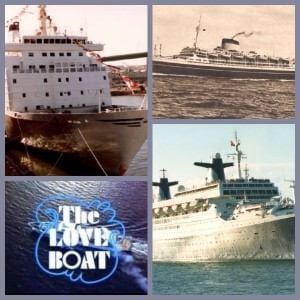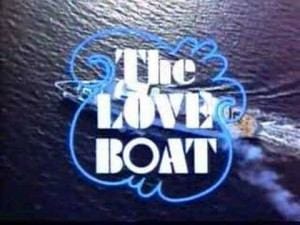 The average lifespan for a passenger ship can be as long as 30 years. But, way before most ships reach that age, many are sold to other cruise lines and given a whole new life, complete with new paint, new ownership, and a new name. They’re often advertised as new, but they are anything but.
The average lifespan for a passenger ship can be as long as 30 years. But, way before most ships reach that age, many are sold to other cruise lines and given a whole new life, complete with new paint, new ownership, and a new name. They’re often advertised as new, but they are anything but.
On the most recent episode of The Travel Detective, Peter investigated cruise ships (most from companies that aren’t U.S. based) that claim to be new, but are far from that. Most are recently refurbished, but some have storied lives and even storied deaths.
Many ships suffer catastrophic damage due to fires, collisions, and sinking. Then they are repaired and returned to sea, under a different name.
In fact, looking at a total of 284 cruise ships; 102 have sailed under previous names. That’s 35 percent of all ships. Here are just a few notable stories.
The Stockholm
If you’re a Seinfeld fan, you’ve probably heard the story of the Andrea Doria. But what about the story of The Stockholm, the ship hit by the Andrea Doria on July 25, 1956? The Stockholm was a Swedish Conga Liner that used to sail very long voyages from Stockholm to New York. On that evening in 1956, The Stockholm collided with the Andrea Doria, destroying its own bow and causing massive damage to the Andrea Doria. The Andrea Doria eventually sank. But The Stockholm limped back to port, where is was bought by a new company and given a new life. Today, the ship (now called The Athena) is still sailing!
The Norway
The Norway certainly didn’t start as The Norway. Originally, one of the last great transatlantic ocean liners, it was a two-class ship built for crossing the Atlantic, as The SS France. For its time, it was super super modern with a very large tourist class and a very large first class with the best food in the world. In fact, the ship was so expensive to operate that she needed a subsidy from the French government to continue. By the early 1970s, that subsidy came to an end. At the time, she was too big to be a cruise ship; the typical cruise ship of that era was a fifth of the size. But NCL bought the ship. It was completely rebuilt for warm weather cruising, with a Lido deck with an outdoor pool, central air conditioning, larger cabins, and updated decor. Renamed the SS Norway, the ship was a success until the early 2000s when there was a boiler explosion in Miami.
The Pacific Princess
You might remember the famous Pacific Princess from the Love Boat. The ship wasn’t built as the Pacific Princess. She was built as the Sea Venture for Flagship Cruises, a Norwegian line sailing out of New York. As the Sea Venture, she made headlines when she rescued The QE2‘s passengers after a breakdown. In 1975, PNO lines was looking to expand its new US West Coast-based Princess Division. So they bought the ship and renamed her Pacific Princess. As the Pacific Princess, she carried 646 passengers, and later, she sailed as the MS Pacific, with a capacity of 780 passengers. The ship sat in Genoa when she failed a safety inspection in 2008. It was deemed too expensive to fix her, and there were no buyers at auction. Ultimately, she was purchased by a Turkish scrapyard where she made her final voyage to be stripped for metal and parts at the end of 2013.
The Sundancer

The Sundancer started as a Swedish ferry called the Svea Corona, which sailed in the Baltic Sea. The ship was bought by Sundance cruises, a newly formed division started by Stanley McDonald (the man who formed Princess Cruises in the 1960s). He wanted to start a new cruise line, called Sundance Cruises, where you could actually get your car, drive it onto the ship, and sail off to Mexico for seven days. In the summer, they put the ship on Alaska cruise service. Shortly after it began sailing that circuit, it struck a rock off Vancouver and sank. It was declared a total constructive loss. En route to be scrapped, a Greek company saw potential. They bought the sunken Sundancer, raised her, and fixed her. Later, she sailed as the MS Pegasus, suffered a fire, and sank…again. She was fixed once again to sail as the Ionian Express, but caught fire in the rebuilding process and was declared a total constructive loss for the third, and last, time. In 1995, she was towed to a Turkish scrapyard.
For more stories of marine salvage, check out:















